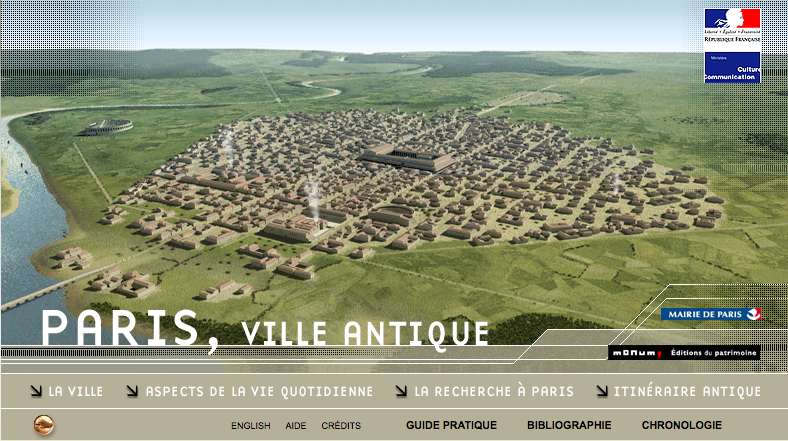Ancient Paris
Although the earth beneath the capital has been revealing clues to its ancient past for centuries, the archaeology of Paris only truly begins with the large-scale public works organised by Baron Haussmann in the 19th century. Today more than ever, the urban development of land in and around Paris provides valuable opportunities to learn more about ancient Lutetia.

The multimedia tour invites us on a journey through time, starting with Gallic Lutetia, the oppidum of the Parisii tribe mentioned by Julius Caesar in the Gallic War, that was, perhaps wrongly, associated with the Île de la Cité.
3D models
Enjoy an immersive visit to the Gallo-Roman settlement, and discover life in the city in the 2nd century CE through 3D reconstructions of its major buildings, which either no longer exist or have been partially destroyed, including the celebrated "arènes de Lutèce", the ancient thermal baths of Cluny, the aqueduct, theatre, and the forum built at the top of Montagne Saint-Geneviève, not far from where the Panthéon stands today.
Daily life
The section devoted to the daily lives of the first Parisians gives an insight into their work, activities and environment. Users can interactively handle artefacts discovered during excavations – a fibula, a statuette, a vase and a pocket knife – to bring the past back to life and make it easier to understand the significance of these objects.
The layering of past and present cities using plans, maps and aerial photographs reveals the ancient origin of certain roads in the Latin Quarter, and users can prepare for their next visit to Gallo-Roman Paris by consulting the ancient route from the Montagne Saint-Geneviève to the Île de la Cité and the practical guide.
Please note
Content from previous website, published in 2003, identical in 2020.

